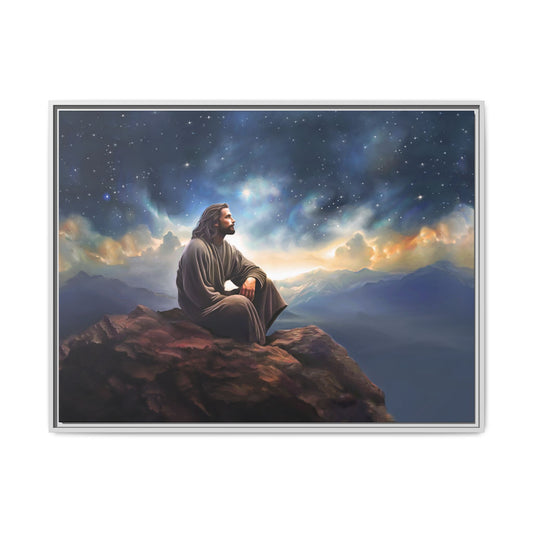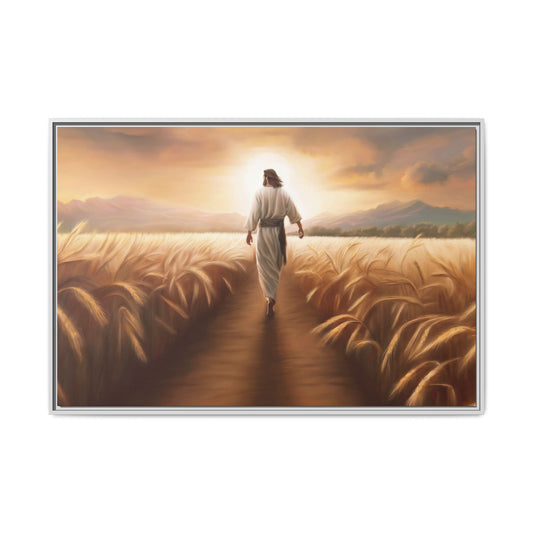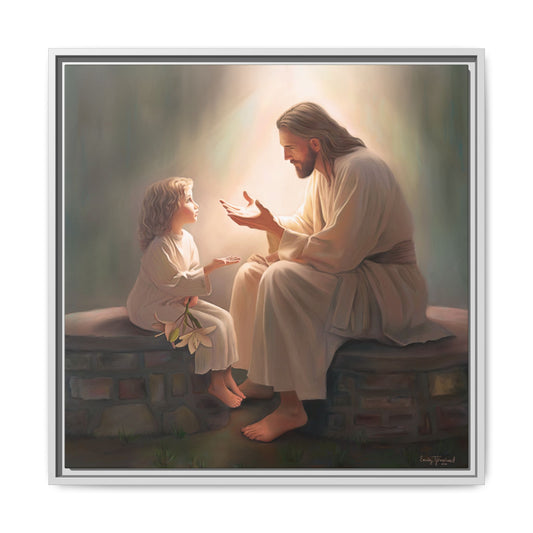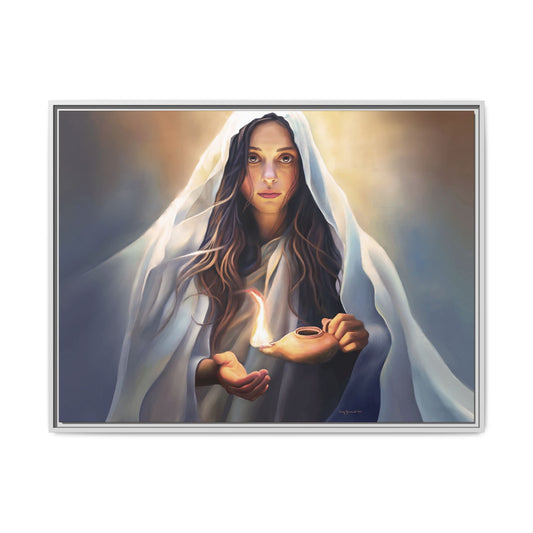In our quest to understand the enigmatic figure of Jesus, we find ourselves suspended between the stark contrasts of ancient Hebrew tradition and the radical teachings of the New Testament. We're drawn to the complex portrait painted by the authors of the Bible, where Jesus emerges not merely as a historical figure, but as the embodiment of divine prophecy and spiritual fulfillment. With measured curiosity, we explore the
Hebrew depiction of Jesus, recognizing the layers of cultural and religious significance that have shaped his image through the ages. This journey through scripture and tradition raises poignant questions about the nature of messianic expectation and the intersection of faith and identity. As we navigate these ancient narratives, let's consider how this portrayal resonates within the broader tapestry of religious art and thought, and what it reveals about our own understanding of the sacred.
Key Takeaways
- Jesus is presented as the eternal Son of God, equal in divinity with the Father.
- The Son is exalted over all creation because of His suffering death.
- The Son becomes superior to angels in rank.
- The Son's exaltation displays the eternal glory and majesty of God.

What Is Considered to Be a Hebrew Picture of Jesus
As we explore the Hebrew depiction of Jesus, we're considering how these portraits echo the deep reverence and worship He commands. It's crucial for us to understand the significance of representing
Jesus in art that's both worshipful and theologically sound. Through this article, we aim to shed light on the rich tapestry of Hebrew
portraits of Jesus and their impact on our faith.

Jesus Portraits overview
What exactly constitutes a Hebrew
picture of Jesus when we visit the scriptural portrayal found in Hebrews 1? We're exploring a depiction that transcends typical Christian art and history, jumping with both feet into the essence of who Jesus is from a Hebrew perspective. This isn't just about physical representations; it's about understanding Jesus as the radiance of God's glory and the exact imprint of His nature. In the Hebrew context, Jesus is the eternal Son of God, deeply rooted in the traditions and prophecies of the Old Testament. Our exploration reflects a deep reverence for Jesus' divine identity, acknowledging His role in creation and sustenance of all things, and His exalted position as the King of Kings in Hebrew tradition.
Importance of representing Jesus in worshipful art
Reflecting on the scriptural portrayal of
Jesus in Hebrews 1 enhances our appreciation for worshipful art that truly captures the Hebrew picture of Jesus as the divine King. In Christianity,
images of Jesus serve as focal points for worship, reminding us of His nature and divinity. Such depictions not only honor the
Hebrew roots of our faith but also help us connect with Jesus on a deeper level.
| Aspect |
Description |
Importance |
| Nature |
Divine King |
Encourages reverence |
| Image |
Radiance of God |
Deepens understanding |
| Role |
Creator & Sustainer |
Inspires awe |
| Worship |
Central to faith |
Unites believers |

Hebrew-type portraits of Jesus
To grasp the Hebrew concept of Jesus, it's essential to explore how He's depicted in various texts, shedding light on His nature as understood within the context of Hebrew thought and tradition. Our aim is to explore:
- The portrayal of Jesus Christ in Hebrew and Jewish writings outside of the New Testament
- How the Gospel narrative integrates with Jewish expectations of the Messiah
- The interpretation of Jesus' teachings and actions from a Hebrew perspective
We're not just retelling stories; we're uncovering the layers of
meaning that inform a Hebrew picture of Jesus. It's a journey through ancient texts to discover how early Jewish followers of Jesus viewed Him, blending historical insights with religious understanding.

Historical Context
To truly grasp the Hebrew depiction of Jesus, we must consider the era's cultural backdrop. Jewish
traditions and beliefs profoundly influenced how Jesus was portrayed, intertwining with early Christian art. An examination of these elements reveals a rich tapestry of imagery connected to Hebrew roots.
The Hebrew culture during Jesus's time
Understanding the historical context of Hebrew culture during Jesus's time is critical for comprehending the depth of the claims made about Him in Hebrews 1. We must consider several key aspects:
- The deeply religious milieu centered on the Torah and the Temple
- The expectation of a Messiah to restore Israel's fortunes
- The complex social structures influenced by various sects like the Pharisees and Sadducees
In Jesus's time, Hebrew culture was a dynamic amalgam of religious practices, social norms, and political tensions. The Testament narratives reflect this vibrant backdrop, providing insight into the world Jesus inhabited. By grasping the Hebrew context, we can better understand the revolutionary nature of Jesus's teachings and the profound implications of His role as depicted in the scriptures.
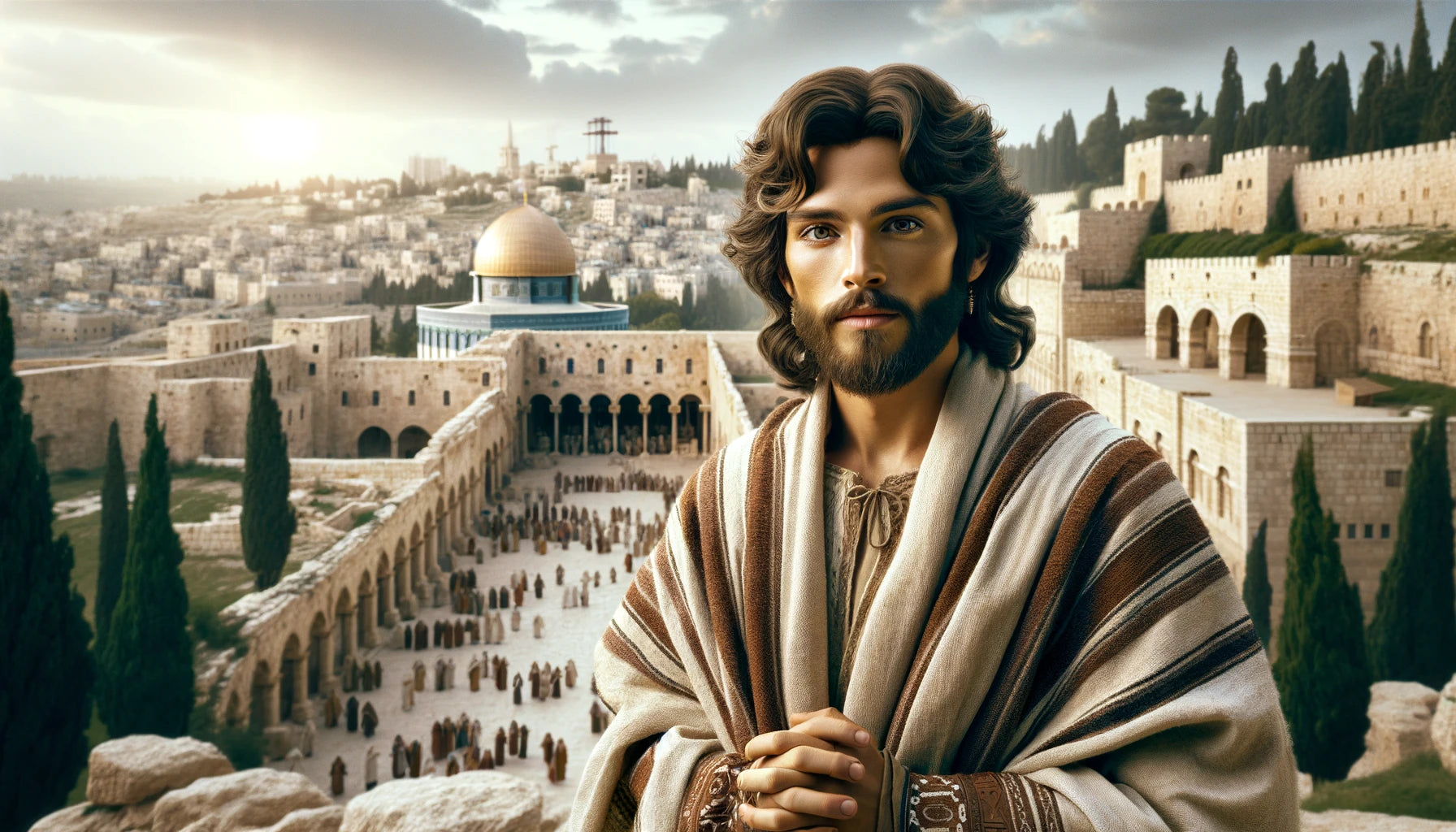
Influence of Jewish traditions and beliefs on the portrayal of Jesus
Reflecting on the historical context of Hebrew culture during Jesus's time enriches our appreciation of how Jewish traditions and beliefs shaped the
portrayal of Jesus. The Hebrew depiction of Jesus is deeply rooted in the rich tapestry of Jewish tradition. Let's review a table that illustrates this complex interplay:
| Aspect |
Jewish Influence |
Portrayal of Jesus |
| Messiah |
Expected liberator |
Fulfilled in Jesus's life |
| Teachings |
Torah-based ethics |
Emphasized in Jesus's sermons |
| Miracles |
Prophetic acts |
Signs of Jesus's divinity |
We've come to see Jesus's life and works through a lens tinted by centuries of Hebrew thought, and this perspective has been crucial in understanding his influence and role within the Jewish tradition and beyond.
Examination of the early Christian art and its connection to Hebrew imagery
Examining early Christian art reveals a profound connection to Hebrew imagery, offering insight into the historical context of the faith's development. As we look deeper, we find:
- The use of symbols, such as the menorah and the Star of David, which highlight the Jewish roots of Christianity.
- Early depictions of Jesus often borrow from the iconography used for ancient Hebrew prophets and kings.
- The integration of Hebrew script and language in art pieces, emphasizing the continuity between the Old and New Testaments.
These elements not only reflect the artistic sensibilities of the time but also convey the early Christians' desire to connect with their Hebrew heritage. This interweaving of Christian and Hebrew motifs serves as a visual testament to the intertwined histories of these two rich traditions.
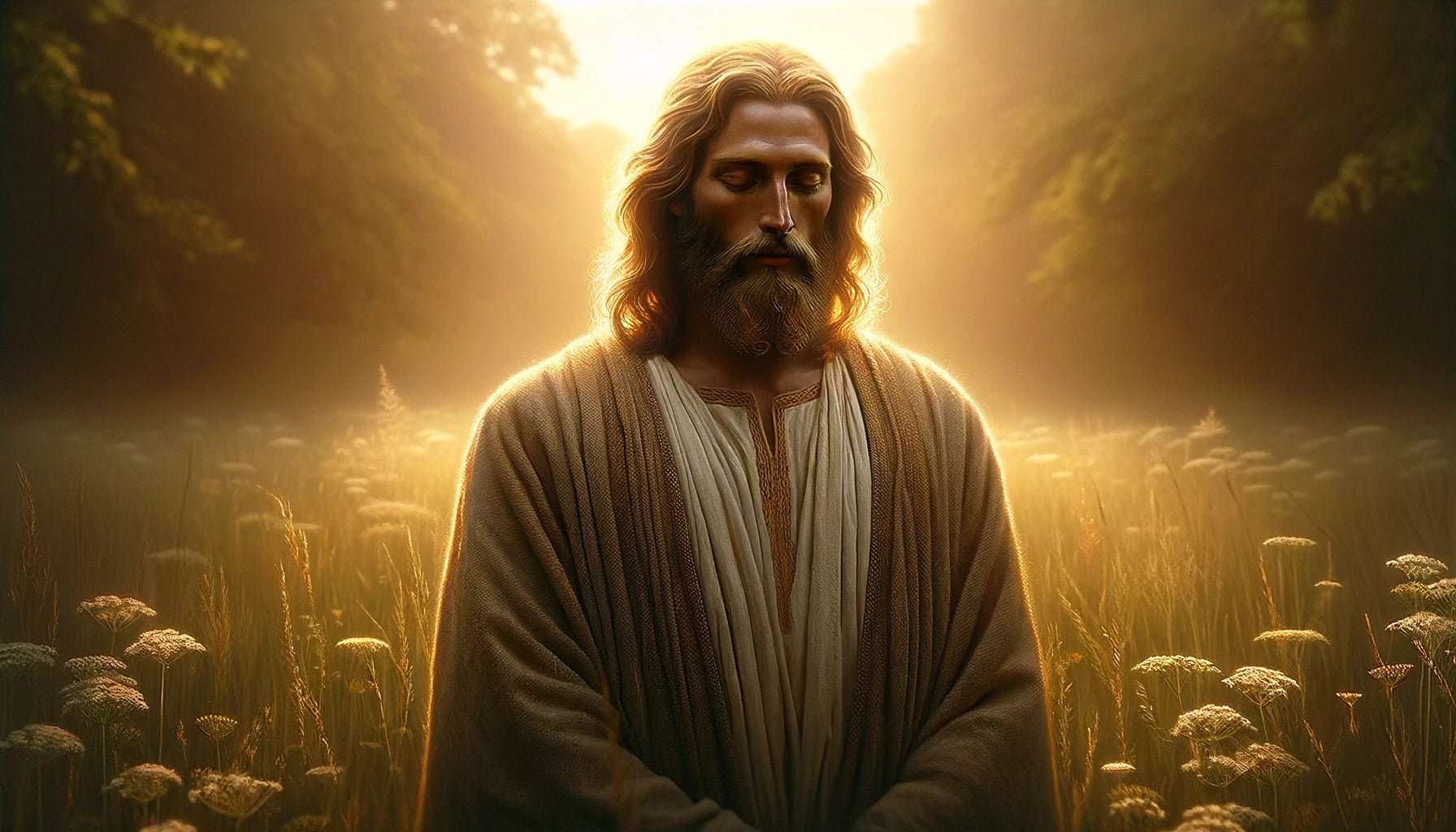
Exploring Hebrew Pictures of Jesus
As we explore Hebrew depictions of Jesus, we're struck by the variety of artistic representations within their culture. These images shed light on how Jesus's physical appearance was perceived and portrayed by Hebrew artists. Most importantly, they offer us a deeper understanding of the significance of these visual interpretations in grasping Jesus's identity.
Overview of different artistic representations in Hebrew culture
In exploring Hebrew artistic representations of Jesus, we'll discover a rich tapestry of imagery that both honors and interprets His divine and human nature. Through these depictions, we're able to see how Hebrew culture has visually grappled with the unique identity of Jesus as portrayed in scripture. Traditional Hebrew art often avoids direct representations of Jesus, focusing instead on symbolic elements from the life of Jesus as found in the Christian gospels. In some Hebrew Christian communities, there's a blend of Jewish and Christian motifs, reflecting a deep respect for both religious heritages. Modern Hebrew artists may explore abstract or conceptual art to express theological ideas about Jesus, challenging both Christians and Jews to think differently about the church's central figure. These diverse expressions enrich our understanding of Jesus within the Hebrew cultural context.

Explanation of how Hebrew pictures portray Jesus's physical appearance
Building on our understanding of Hebrew cultural expressions, let's explore how these artistic depictions translate into visual portrayals of Jesus's physical appearance. Hebrew
pictures of Jesus emphasize aspects of his life and ministry rather than striving for a photorealistic depiction. The focus is often on symbolic representation, conveying deep theological truths rather than detailing his physical traits. Yet, when his physical appearance is depicted, it's usually with an intent to connect with the Hebrew roots of Christianity, suggesting a more
Middle Eastern look in contrast to Western images. These pictures reflect Jesus's historical and cultural context, presenting him in a way that resonates with the essence of his life and teachings within the Hebrew tradition.
Discussion on the significance of Hebrew imagery in understanding Jesus's identity
Exploring Hebrew imagery offers us profound insights into Jesus's identity, revealing aspects that are often obscured by more familiar Western artistic conventions. When we look into Hebrew depictions, we're not just looking at physical representations; we're uncovering layers of meaning that resonate deeply with our faith. Hebrew images often emphasize Jesus's role as the Messiah, deeply rooted in the prophecies and expectations of the Hebrew Scriptures. Such depictions can highlight Jesus's connections to various symbols and themes in Jewish tradition, enhancing our understanding of His identity. They remind us that Jesus emerged from a specific cultural and religious context, which shapes our perception of His teachings and mission. In this light, we're able to see Jesus in a way that's both historically grounded and rich in the heritage of our faith.

The Role of Hebrew Art in Worship
We recognize the power of visual aids in deepening our worship and devotional lives. Hebrew
pictures of Jesus not only enhance our worship experiences but also connect us more intimately with His divine nature. Through case studies and personal testimonies, we'll explore how these images bring worshipful meaning to individuals within our community.
Importance of visual aids in worship and devotional practices
In considering the Hebrew depiction of Jesus, visual aids in worship, such as art, play a crucial role in enhancing devotional practices. They bring the stories and teachings of the Bible to life, providing a tangible connection to the divine. Through visual aids, we can:
- Deepen our understanding of scripture
- Enhance the focus of our prayer life
- Enrich the experience of worship
Images serve as gateways to a deeper spiritual connection, allowing us to visualize the sacred narratives that shape our faith. Whether it's a painting, a stained glass window, or a sculpture, these representations help us internalize and reflect on the profound messages of the Bible. We're able to engage with our beliefs in a more profound, multisensory way.

How Hebrew pictures of Jesus enhance worship experiences
Building on the importance of visual aids in worship, Hebrew depictions of Jesus serve to intensify our worship experiences by providing a vivid representation of the divine. By engaging with Hebrew art, we connect with Jesus' historical and cultural context, which brings a richer understanding to our worship. These images bring to life the words of Scripture, where Jesus is the radiance of God's glory and the exact imprint of His nature. They help to enhance our spiritual connection, fostering a deeper sense of community among us. As we gaze upon these Hebrew depictions, we're not just seeing a face; we're reminded of the spirit and power of Jesus, stirring our hearts to worship with authenticity and reverence.
Case studies and testimonies from individuals who find worshipful meaning in Hebrew images of Jesus
Many believers report that Hebrew
images of Jesus deeply enrich their worship and spiritual lives. These depictions bring a sense of authenticity and historical connection that resonate with our faith journey. Here are some ways these images impact us:
- They remind us of Jesus' humanity and His cultural context.
- They help us connect with the biblical narratives on a deeper level.
- They encourage us to appreciate the diversity within the body of Christ.
Through these testimonies, we're learning that worshipful engagement with Hebrew
images of Jesus isn't just about aesthetics; it's a powerful tool for spiritual formation and a way to embrace the fullness of His identity.

Modern Interpretations of Hebrew Jesus Portraits
We're exploring how contemporary artists infuse Hebrew traditions into their depictions of Jesus, creating artwork that resonates with today's worshipers. These modern portrayals not only impact our spiritual practices but also strengthen our personal connection with Jesus.
Exploration of contemporary artists utilizing Hebrew influences in their artwork
Contemporary artists are increasingly drawing on Hebrew traditions to shape their portrayals of Jesus, reflecting both ancient roots and modern sensibilities in their work. These creative minds are infusing their artwork with a rich tapestry of Hebrew symbols and script, offering a nuanced lens through which we can view the figure of Jesus. Here's how they're making an impact:
-
Interweaving Hebrew Scriptures: By embedding Hebrew text into their art, they're creating a direct link to Jesus' Jewish heritage.
-
Incorporating Jewish Symbols: Artists use motifs like the menorah or Star of David to root Jesus in his cultural context.
-
Utilizing Traditional Techniques: Some may employ ancient methods, such as iconography or calligraphy, to honor historical art forms.
Through these influences, they're forging a powerful connection between the contemporary and the timeless.

Discussion on the impact of modern interpretations on worship and spirituality
Modern
interpretations of Jesus through a Hebrew lens can profoundly shape our worship and spirituality, inviting us to rediscover the roots of our faith. These perspectives offer a more connected understanding of worship as it was practiced in Jesus' time, affecting how we approach spiritual disciplines today. The impact is significant – it transforms our prayer and liturgy, grounding them in historical authenticity that enriches our experience. We're seeing the interpretations challenging and expanding our theological boundaries, prompting us to revisit doctrines with fresh eyes. As we engage with these modern views, our spirituality gains depth and our worship becomes more vibrant. This journey into the Hebrew portrayal of Jesus doesn't just inform us – it revives our spiritual practices and brings us closer to the sacred.
How modern interpretations bridge the gap between historical accuracy and personal connections to Jesus
As we explore the Hebrew depiction of Jesus, interpretations that marry historical accuracy with personal faith help us forge a deeper connection to Him. We're seeing a growing trend where modern scholars and believers are:
- Ancient Hebrew texts can shed light on a more historically accurate understanding of Jesus.
- Embracing cultural contexts to enrich our personal connections with His teachings.
- Utilizing artistic interpretations that resonate with both our heritage and contemporary spirituality.

Controversies and Debates
We've reached a point where we must tackle the controversies that arise from using Hebrew depictions of Jesus. There are varied opinions on whether these portrayals are appropriate and how effectively they convey biblical truths. We encourage a respectful exchange of ideas, recognizing the value in a diversity of artistic expressions.
Examination of controversies surrounding the use of Hebrew pictures of Jesus
The depiction of Jesus in Hebrew imagery has sparked considerable debate, with some arguing it challenges traditional Christian iconography. Hebrew pictures of
Jesus often differ from Roman Catholic and Eastern Orthodox traditions, causing tension. Some see these depictions as a powerful way to connect Jesus to His Jewish roots, while others view them as revisionist. The controversies mainly revolve around the interpretation of Jesus' identity and how it aligns with the concept of God in Christianity. We're sensitive to the fact that any depiction of Jesus can be controversial, as it touches on deeply held beliefs about His nature and how we relate to God. Yet, we're committed to exploring these Hebrew images and the discussions they provoke.

Different perspectives on the appropriateness and effectiveness of Hebrew portrayals
Turning now to the heated discussions about Hebrew portrayals of Jesus, opinions vary widely on their appropriateness and impact within Christian discourse. Some feel that depicting Christ through a Jewish lens respects His historical and cultural context, providing a richer understanding of His life and teachings. They argue that Jesus, being Jewish, lived and taught within the framework of Jewish law and tradition. Others, however, question if these portrayals might confuse believers or dilute the universal message of
Jesus for all people. We're aware that every image carries implications, and in our diverse and interconnected world, it's crucial to approach the depiction of Jesus with both reverence for the past and sensitivity towards how these images resonate with Christians today.
Encouragement of respectful dialogue and appreciation for diversity of artistic expressions
In light of varying perspectives on Jesus' portrayal, it's crucial that we foster respectful discussions and value the multitude of artistic expressions. Artistic representations of religious figures can be a sensitive subject, but embracing diversity in these expressions enriches our understanding and appreciation of different cultural perspectives. Recognizing that artistic expressions are influenced by cultural and personal contexts, engaging in dialogue that's respectful of differing beliefs and interpretations, and celebrating diversity as a means to broaden our own perspectives. We must remember that our own interpretations aren't the only ones that matter. As we discuss and critique these works, let's ensure our dialogue remains grounded in respect and openness to the diverse ways Jesus can be depicted artistically.

Conclusion
We've explored the profound significance of Jesus' portrayal in Hebrews and its impact on our worship. Let's embrace the varied artistic representations that enhance our worship experiences. We encourage readers to engage with these Hebrew depictions of Jesus to deepen their spiritual connection.
Recap of the significance of Hebrew pictures of Jesus in worship
Reflecting on the Hebrew portrayal of Jesus, it becomes clear that His divine nature and role in worship are central to Christian faith and practice. Understanding historical context can uncover layers of meaning that deeply enrich our worship:
-
Understanding Jesus' Roots: Recognizing Jesus' Hebrew background connects us to the historical and cultural context of His earthly ministry.
-
Divine Nature: The Hebrew depiction emphasizes Jesus' divinity, reaffirming our belief in His role as the Son of God.
-
Worship Practices: These pictures influence how we visualize and venerate Jesus in our worship, shaping our spiritual expressions.
These aspects remind us of the profound impact that Hebrew portrayals of Jesus have on our faith.

Call to embrace the diversity of art in worshipful expressions
Embracing the diversity of artistic expression in worship allows us to encounter the divine in manifold ways. By incorporating varied forms of art, we enrich our spiritual experiences and broaden our understanding of the sacred. When we embrace these diverse expressions, we create a tapestry of worshipful devotion that reflects the complexity and beauty of our faith. Art in its myriad forms—whether visual, musical, poetic, or dance—provides unique windows into the divine mystery. It's not just about aesthetics; it's a profound way of engaging with our beliefs and celebrating our relationship with the divine.
Encouragement for readers to engage with Hebrew pictures of Jesus and deepen their connection to the divine
As we explore the diverse expressions of worship, let's also deepen our understanding of the divine by engaging with Hebrew depictions of Jesus. These images offer us a unique perspective that enriches our spiritual journey.
-
Discovering the Jewish roots of Jesus can transform our appreciation for His life and teachings.
-
Exploring ancient symbols and meanings connects us to the historical context of the divine narrative.
-
Reflecting on Hebrew artwork inspires a deeper emotional and spiritual connection.
We encourage our readers to dive into these Hebrew
pictures of Jesus. It's more than just an educational journey; it's a way to forge a stronger bond with the divine. Let's embrace this opportunity to enhance our connection with Jesus and grow in our faith together.

Frequently Asked Questions
How Do Rabbinic Jewish Texts Traditionally View the Person and Role of Jesus?
We generally understand that rabbinic Jewish texts traditionally view Jesus as a historical figure but reject his divinity and messianic claims, focusing instead on adherence to traditional Jewish law and theology.
What Are the Key Differences Between a Hebrew Portrayal of Jesus and a Christian Portrayal?
We're comparing portrayals: Christian texts exalt Jesus as divine, while Jewish writings often view Him as a historical figure without supernatural attributes. This fundamental difference shapes our distinct religious perspectives and practices.
How Does the Depiction of Jesus in Hebrews 1 Compare to Messianic Prophecies Found in the Hebrew Bible?
We're exploring how Hebrews 1's depiction of
Jesus aligns with Old Testament prophecies, noting similarities in divine attributes, authority, and the expectation of a Messiah who fulfills God's promise.
In What Ways Have Hebrew Depictions of Jesus Influenced Jewish-Christian Dialogue and Relations Throughout History?
We've seen Hebrew
portrayals of Jesus shape Jewish-Christian interactions, bridging theological divides yet sometimes fueling debate over messianic interpretations and the nature of Jesus as both divine and human.
Are There Any Known Ancient Hebrew Artistic Depictions of Jesus, and if So, What Characteristics Do They Display?
We've found no ancient Hebrew artistic representations of Jesus, suggesting such imagery was either not created or hasn't survived, possibly due to aniconic traditions within early Jewish-Christian communities.
Conclusion
As we wrap up, we've seen Jesus through Hebrew eyes—yet, isn't it ironic? The more we sketch His image, the clearer it becomes that words fall short. Our brushes quiver in awe; the canvas of our understanding can't contain Him. In our quest to depict the Undepictable, we find ourselves humbled, reminded that the truest portrait of the Divine is etched not on parchment or stone, but on the hearts of those who believe.
































